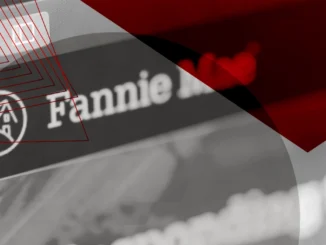
The Federal Reserve‘s effort to temper inflation has cooled the housing market that remains subdued with mortgage rates north of 7%.
While the central bank left the benchmark rate unchanged in the target range of 5.25%-5.5% this week, Fannie Mae Chief Economist Doug Duncan believes that mortgage rates will stay elevated before the Fed makes further rate cuts.
“We’ve always been in the camp that we believe Fed Chair Jerome Powell when he says higher for longer,” Duncan said in an interview with HousingWire this week.
With the majority of Fed officials expecting another rate hike by year-end, Duncan predicts a 50/50 chance of that happening, depending on how resilient the economy is against the Fed’s monetary policy.
Elevated mortgage rates will lead to more lenders spilling red ink in the latter half of the year, in contrast to the improved financial performance of independent mortgage banks in Q2.
However, a silver lining in the subdued housing market is the strength in new-home sales. Builders are providing rate buy-downs for first-time homebuyers, which aligns with their interests, Duncan explained.
Read on to learn more about Duncan’s views on the housing market, loan performance and affordability challenges homebuyers face.
This interview was condensed and lightly edited for clarity.
Connie Kim: The Federal Reserve decided to keep the benchmark rate unchanged in the target range of 5.25%-5.5%. With the majority of Fed officials expecting another rate hike before the end of 2023, how do you think this decision will affect housing and your forecast for the economy?
Doug Duncan: It’s our forecast that they won’t make another change until they drop rates. I think the forwards suggest that in either November or December, there’s a 50/50 chance to make an increase. I would say the risks are tilted that way, but we don’t have it in our forecast model.
We don’t have (the Fed) dropping rates until the end of Q2 next year, and we have a mild recession that starts in that quarter.
The reason that forwards are suggesting a 50/50 chance of another increase is that growth has been stronger than anticipated. We actually think that’s going to slow; I think that this is kind of like a final burst of activity.
We don’t know what third-quarter growth was. Our expectation, at an annual rate, is it’s north of 3%. If there’s another quarter like that, and oil prices have pushed to $100, then I think you get another quarter-point move by the Fed, especially if you don’t see a substantive change in employment.
Kim: Spreads in the mortgage space are wide. What are the reasons for that?
Duncan: There are several reasons for that. If that business flow for a time period helps them cover the variable costs, then it can be effective.
For one thing, no fixed-income investor thinks that mortgage-backed securities with 7% mortgage rates will be there when the Fed finishes the inflation fight. They’re going to cut rates and that will prepay. So you’re having to encourage investors with wider spreads to accept that.
It’s also the case that the Fed is running its portfolio off because they don’t talk about it much. But somebody has to replace the Fed, and the Fed is not an economic buyer. That is they weren’t buying for risk-return metrics; they were buying to affect the structure of markets. So they are a policy buyer.
They were withdrawing volatility from the market, and they were lowering rates to benefit consumers. When [the Fed] is replaced, it’s likely to be by a private investor who’s going to have yield expectations. They may require wider spreads than the Fed because the Fed is not an economic buyer.
Kim: A bit of good news for lenders in Q2 was that their production volume went up and origination costs went down. Are you optimistic this trend will continue?
Duncan: If rates stay at the 7.25% level, it’s going to be worse, not better. On the production side, the mortgage business is in recession because the levels of existing-home sales are back where they were at the end of the great financial crisis at around 4 million units. That’s very low historically.
I don’t see how it can go much lower than that. Even if we have a recession, we don’t see it going just a hair under 4 million. The reason why some of the headlines look good about housing is because house prices were expected to fall when rates ran up. They did for a quarter as households sort of adjusted to the idea that they were going to be running at a new higher level.
But prices are rising again. For existing homeowners, that’s good news because it means equity accumulation. But if you’re a first-time buyer, that’s not good news because it means it’s harder to qualify — especially with interest rates where they are.
Production is in a recession. The servicing side of the business is doing very well because those loans are simply not going to prepay for a long time. So, the servicing valuation on those loans is strong, because pre-payments are low. It’s a bifurcated market in that sense. We expect production volumes to remain low through 2024 and start to pick up maybe toward the end of 2024.
Kim: The silver lining in the current housing market is an uptick in new construction sales due to a lack of existing-home inventory. To what extent builders will offer rate buy-downs to drive sales remains to be seen. How likely are builders to support rate buy-downs, especially when it’s becoming expensive to do so?
Duncan: The traditional way in which builders gave borrowers choices regarding affordability was to offer them granite countertops. So if sales volume slows, they will throw in granite countertops, finish the basement or finish out the garage.
In doing interest rate buy-downs, they’re focused more on the problem of the first-time buyer. That’s because [the cosmetic] attributes of a house are more for move-up buyers. Builders recognize they’ve got to do something for affordability for the first-time buyer.
The share of new-home sales that are going to first-time buyers is the highest it’s ever been. The share of total sales that are new-home sales is also the highest it’s ever been. This is a highly unusual structure for the market.
The builders know that those loans are likely to get refinanced, even if they buy down two points. So they go from 7.5% to 5.5%. When the Fed is done with the inflation fight and if economic growth is back to the 2% to 2.5% level, mortgage rates will probably run to 4.5% to 6% over the cycle. These loans are going to refinance, and the consumer will be in good shape, building equity to become a move-up buyer. So there is an alignment of interests for the builders in doing this.
Kim: The housing market was relatively active during the spring and summer homebuying seasons despite lower historical sales than previous years. Looking ahead, do you see another rough Q4 like last year when rates surged? What are some factors that Fannie Mae is monitoring?
Duncan: If growth surprises to the upside, that will get the Fed to increase interest rates, which will push [mortgage] rates again. That would be the biggest challenge and just seasonality; the fourth and first quarters are the low points for seasonality.
Kim: Bankruptcies and layoffs are still happening. How far are we into the industry’s consolidation?
Duncan: I was looking at the bankruptcy data. It’s just gotten back to the pace of bankruptcy we saw in 2019. It is true [consumer] bankruptcies have been rising but from extremely low levels. I actually expect that to continue. In part, that’s because some businesses (probably smaller and midsized businesses) were kept going by very low interest rates for a very long time.
In the mortgage space? Certainly, you’ll continue to see exits from the business. Typically, mortgage companies are not publicly owned. So it happens quietly. It’s people in the industry that know who the players are that are in trouble. The employment data comes out on a lag basis for brokers and loan officers. So that has picked up. I would expect more.
Kim: Executives at Dark Matter Technologies noted that lenders are most interested in bringing down their origination costs and retaining their clients in this rising-rate environment. What other demands do you see from lenders?
Duncan: They have been investing in technology — primarily consumer-facing technologies to get business in the door. Now, that’s not a possibility. Because of the changes in interest rates and a drop-off in demand, they are now focused on tech investments that go into cost savings.
They are turning their attention to what they can do to lower origination costs. Can they convert fixed costs to variable costs? That’s really the question that the industry has to focus on. If they can convert fixed costs to variable costs, then when the cycle changes, they don’t get hit as hard by the drop-off in this business. That’s because the operating structure also drops off.
Kim: I notice a lot of independent mortgage banks roll out down payment assistance (DPA) programs for conventional loans. DPA programs were predominantly for FHA loans. What are the pros and cons of IMBs rolling out DPA programs for conventional loans?
Duncan: For the independent mortgage companies, down payment assistance gets the business through the door, right? If they’re covering their variable costs, they can keep going for a while and, eventually, they have to cover the fixed costs.
The question is, what are the other credit characteristics of the borrower? If they are an IMB, they have to place it with an investor. So the investor will be monitoring. For example, if it’s Fannie Mae or Freddie Mac, we monitor that. We look at making sure there are not layered risks in any consumer’s profile. For example, if they have a spotty employment record, but they’ve always paid their bills on time, and they have savings, they’ve got money to pay 20% down, then it would probably be acceptable to have that spotty employment record. But if there’s a spotty employment record and a spotty repayment record on their credit, that’s not going to make it through the screen.
Kim: DPA programs offered with FHA loans come with higher rates. If the FHA loans layered with a DPA are more costly, how do first-time buyers benefit from these programs?
Duncan: The question you ask is a really interesting social question. The foreclosure rate for FHA loans is higher than the foreclosure rate for VA loans or Fannie Mae or Freddie Mac loans. Fannie and Freddie are the lowest; VA is a little bit higher. FHA is the highest. There’s not a clear answer on what’s the optimal rate of foreclosure.
If [that rate] is zero, we can get to zero. But we aren’t going to be making very many loans. So there is some optimal level of risk-taking to help people realize their hope of owning a home. But it’s not a hard and fast number. Different people have different points of view on that.



